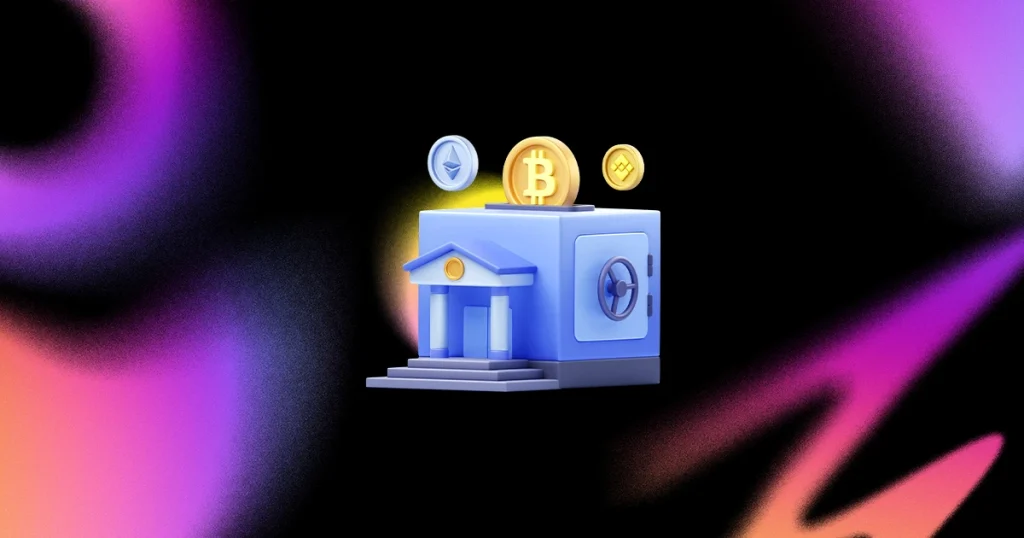Why NFTs could be a big help for financial services & banking?
NFTs are based on the same decentralized networks that underpin numerous well-known cryptocurrencies, smart contracts and blockchain technology. Blockchain solutions offer entirely verifiable data, an immutable ledger history, and trustless, highly secure operations by definition. Smart contracts, on the other hand, are preset, self-executing contracts that exist on the blockchain and specify how the assets on the blockchain function.
One-of-a-kind characteristic
While standing for digital ownership, NFTs mean much more than just JPEGs on a blockchain. They may provide any piece of information (a picture, a 3D model, a text, or anything else) in a form of uniqueness and tangibility. It cryptographically becomes distinct from every other batch of data, even if the data is otherwise similar.
Also, NFTs offer a fundamentally more valuable type of digital information. The information that is encoded into an NFT cannot be changed, copied, or accessed in any other manner by anybody who does not have access to the necessary cryptographic keys. An attacker would still be perfectly able to see the history and destination even if they were to successfully take an NFT.
Reliable ownership

Liability NFTs and Asset NFTs, which are designed to demonstrate ownership of a specific contract for the promisor, the person who makes a promise, and the promisee, the party who receives the benefits of a contract, may also be used to tokenize the actual contract agreements themselves.
This offers up a whole new universe of opportunities for handling sensitive data for enterprises and trade finance. What’s more, it offers a way to develop innovative goods, IDs, payment rails, supply chain dynamics, and much more. Consider the use of NFTs to build a blockchain “receipt” that can follow a product from the purchasing of raw materials through its arrival on a retail shelf. Every stage of the procedure, every touch the items received, every purchase or sale made along the way would all be irrevocably documented – better yet, with the least amount of human involvement.
Fraud preventation
Additionally, financial trade must rely on a large lot of trust and navigate complicated supply chain and regulatory processes. Additionally, it is a sector that is still quite vulnerable to document fraud. By tokenizing assets and documents into a single immutable digital token, NFTs may do rid of those obstacles, stop fraud, and lessen the need for middlemen.
This would not only reduce the amount of illegal behavior related to trade finance, but it will also allow businesses to cut costs on overhead, salaries, and human error.
NFTs in decentralized finance: Defi
The financialization of digital goods and services is represented by NFTs, hence NFT installations and markets have grown to be an undeniably vibrant area of DeFi.
NFTs may be thought of as verifiable ownership rights for digital art, similar to how Ethereum used ERC-20s to represent digital assets. Due to the worldwide closure of art galleries as a result of COVID-19 and other cultural developments in the Internet world, Ethereum created a developing space for artists to publish their work and effectively engage with a community of interested collectors. Because of this characteristic, NFTs are crucial to DeFi and play some specific roles in DeFi field.
Address the collateralization issue
A problem with the market’s liquidity is a real bug in the art market. Here, everything is arbitrary.
A picture which is worth $1 million, but without someone is prepared to buy it, won’t be very valuable. To address this problem, DeFi and NFTs operate together in this instance. It may be possible to employ NFT collectibles and works of art as security for DeFi lending as part of the workings. Moving traditional arts to the cryptosphere and NFT art seems appropriate given that they have long been utilized as collateral in the actual world.

Tokenizing the NFTs is another method that NFTs support in alleviating DeFi’s liquidity problems. An illiquid asset will be easily prepared by tokenization.
Resolve the curve model problem
You can take the way NFTs address the curve model issue as a big contribution to the DeFi area. One of the Defi protocols that underwent an upgrade including the curve model for liquidity pools. Since the liquidity was distributed evenly over the whole curve by the curve model, a significant buildup of liquidity did not result in payments to providers.
To tackle this problem, they developed a feature to choose desired custom price sizes for liquidity providers to assess their capital with the aid of NFT space, leading to the increase of their exposure to necessary assets and the decrease in their downside risk.
Ownership of NFTs and deFi
For musicians, the usage of Defi platforms integrated with NFTs represents a revolution. NFT is crucial in helping the original innovators get ownership rights and financial rewards. Owners of NFTs will receive a reasonable portion of the streaming money generated by the songs. Maintaining verifiable profits through an NFT also serves as a strong type of collateral and opens the door to loans with insufficient collateral. This facility is presently not possible in the DeFi only space. Therefore, having NFT is advantageous for Defi space.
The NFT ecosystem will continue to include a sizeable portion dedicated to the commercialization of artistic works via NFTs. However, licensing, copyright ownership, and royalty sharing are the most likely formats.
NFTs in banking
Tokenization of assets
The act of turning tangible or digital assets into digital tokens on a blockchain is known as asset tokenization. By enabling banks to tokenize assets, NFTs provide a number of advantages, including improved liquidity, accessibility, and transparency. Banks may aid in democratizing investment possibilities and streamlining asset management by representing unique assets as NFTs.

Potential for fractional ownership is a key benefit of asset tokenization. High-value assets like real estate, fine art, or rare collectibles can be tokenized by banks so that investors can purchase and exchange portions of these assets. Moreover, this strategy can expand the size of the market by making historically illiquid assets more available to a wider variety of investors.
Identity verification & KYC
Identity verification and Know Your Customer (KYC) procedures can benefit greatly from NFTs. Banks may expedite KYC procedures and lower the risk of fraud by portraying a digital identity as an NFT. Increased security and quicker client onboarding might result from this strategy.
Digital arts & collectibles banking
With the development of NFTs, the market for digital artwork and memorabilia has skyrocketed. Through the provision of financing alternatives for NFT-based assets, banks may profit from this development. This can entail making loans secured by NFTs or offering services made specifically for producers and collectors of digital art.
Smart contracts & Automated transactions
Smart contracts are agreements that automatically carry out their obligations because they are encoded in code. Banks may automate transactions and streamline processes by using NFTs as triggers for smart contract execution. This may lead to lower operating expenses and greater effectiveness.
Cross-border payments & remittances
High costs and protracted processing periods are frequent features of cross-border transactions. NFTs can use blockchain technology to provide quicker, more affordable transfers. By lowering the cost and increasing accessibility of international money transfers, this invention may have a big influence on the banking sector.
Frequently asked questions
NFTs may be put up as security for a loan. Lender and borrower must first come to an understanding on the asset’s worth, the term’s length, and the total interest that must be paid on top of the principal loan amount.
By connecting them to digital tokens on a blockchain, NFTs can act as a substitute for tangible assets. This makes ownership transfer, verification, and tracking simpler. Tokenizing luxury products, real estate, or even great art are examples. Banks may broaden their asset management services as NFTs become more widely used to represent physical assets in order to take advantage of these new opportunities.
NFTs may be utilized for business activities including the purchase and sale of digital commodities and art. NFTs’ extensive commercial use, however, is constrained by factors including the requirement for standardized platforms and legal frameworks. By providing the required infrastructure and services, banks may help to facilitate NFT-based trade.
Wrapping up
There is so much more that NFTs and smart contract platforms can offer to the trade finance sector than simply redefining and simplifying how organizations function. NFTs may enable companies to develop digital representations of goods and test out novel techniques for obtaining finance using a frictionless system. In reality, NFTs may be used to expedite and verify a wide range of operations, including debt management procedures and product provenance.
To find out more useful and practical use cases of NFT in financial services, contact Synodus to receive the up-to-date information and the best solution for your own business.
More related posts from our Blockchain blog you shouldn’t skip:
- NFT Photography Marketplace: All You Need to Know
- NFT Jewelry Marketplace: An Experience or A Real Investment
- Best 25+ Music NFT Marketplaces To Sell And Buy [2025 Edition]
How useful was this post?
Click on a star to rate it!
Average rating / 5. Vote count:
No votes so far! Be the first to rate this post.




